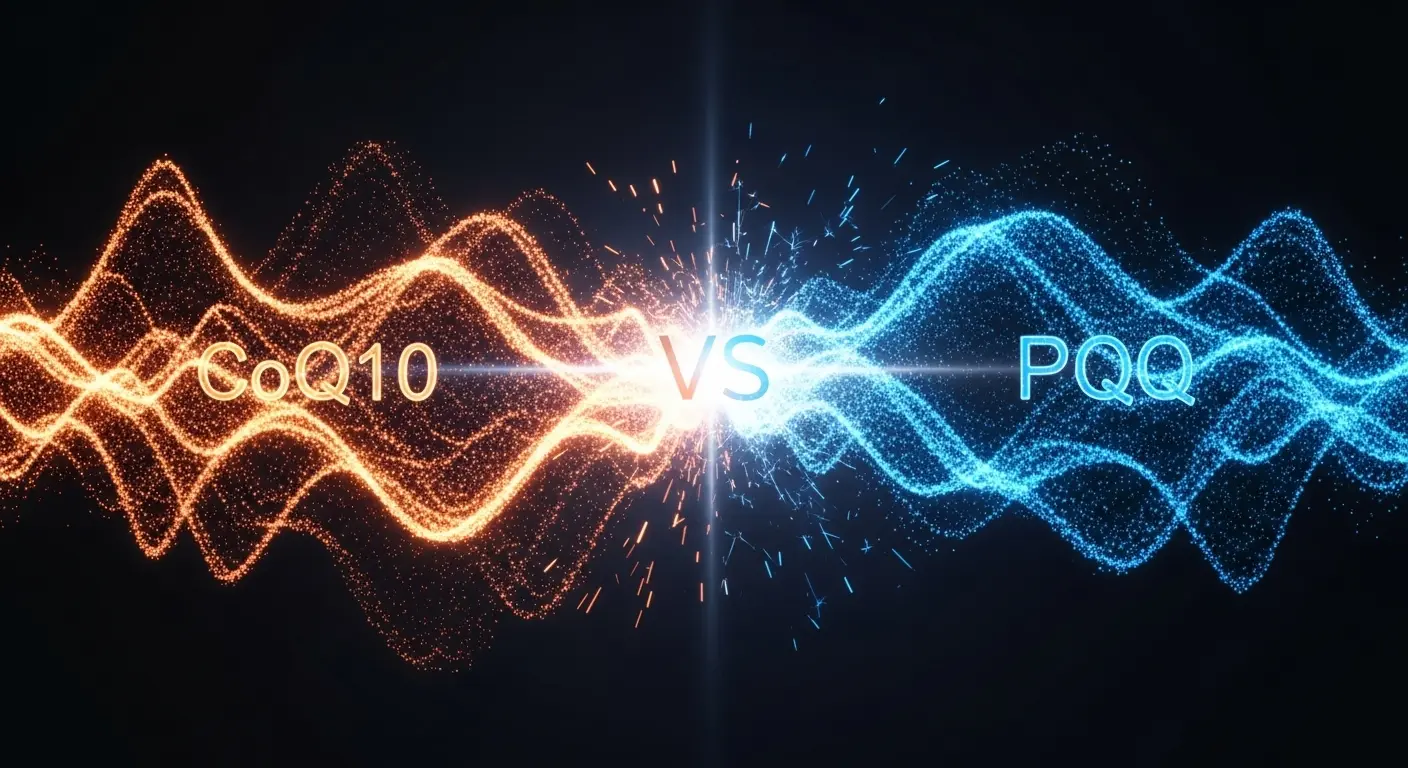If you’ve started exploring ways to boost your energy and fight fatigue, you’ve likely encountered two superstar ingredients: Coenzyme Q10 (CoQ10) and Pyrroloquinoline Quinone (PQQ). Both are powerhouses for cellular health, but they are often presented as competitors. This leads to a crucial question for anyone looking to optimize their health: in the CoQ10 vs PQQ debate, which one do you actually need?
As a nutritional scientist, I see this question all the time. People want to know which one offers more bang for their buck. The truth is, they play two very different, yet equally critical, roles in how your mitochondria—your cellular power plants—produce energy.. Let’s break down the science behind the CoQ10 vs PQQ matchup to find the real answer.
What is Coenzyme Q10 (CoQ10)? The “Spark Plug” of Your Cells
Think of your mitochondria—your cellular power plants—as tiny engines. For those engines to run, they need a spark plug to ignite the fuel. CoQ10 is that spark plug.
Its primary job is to participate in the electron transport chain, the complex process that converts the food you eat into Adenosine Triphosphate (ATP), the main energy currency of your body.
Key Functions of CoQ10:
- ATP Production: It is absolutely essential for creating cellular energy. Without enough CoQ10, your energy production grinds to a halt.
- Powerful Antioxidant: It protects your mitochondrial membranes from the oxidative stress and free radical damage that occurs during energy production.
Simply put, CoQ10 helps the power plants you already have run at peak efficiency and protects them from wear and tear.
What is Pyrroloquinoline Quinone (PQQ)? The “Master Builder”
If CoQ10 is the spark plug that keeps existing engines running, PQQ is the master builder that constructs entirely new power plants.
PQQ’s most famous role is its ability to activate a pathway called mitochondrial biogenesis. This is the process of generating brand-new, fresh mitochondria within your cells. This is a game-changer, especially as we age and our natural mitochondrial production slows down.
Key Functions of PQQ:
- Stimulates New Mitochondrial Growth: More power plants mean a greater overall capacity for energy production.
- Extremely Potent Antioxidant: Some studies suggest PQQ is significantly more powerful than Vitamin C at fighting certain types of free radicals.
- Supports Nerve Growth Factor: It also plays a role in cognitive health by supporting the growth and development of neurons.
The Core Difference: A CoQ10 vs PQQ Breakdown
The best way to understand the CoQ10 vs PQQ distinction is to see their roles side-by-side. While both support energy, they do it in fundamentally different ways.
| Feature | Coenzyme Q10 (CoQ10) | Pyrroloquinoline Quinone (PQQ) |
| Main Role | Optimizes existing mitochondria | Creates new mitochondria |
| Primary Benefit | Enhances energy efficiency | Increases energy capacity |
| Analogy | The “Spark Plug” | The “Master Builder” |
| Key Process | ATP energy conversion | Mitochondrial biogenesis |
The Verdict on CoQ10 vs PQQ: Why Synergy is the Real Winner
So, in the CoQ10 vs PQQ showdown, is there a single winner?
The answer is no. Framing it as a competition is a mistake—they are partners.
Think about it like building and running a factory. PQQ is the construction crew that builds new factory assembly lines, increasing your potential output. CoQ10 is the electricity and skilled labor that makes those assembly lines run efficiently and smoothly.
- Having lots of CoQ10 without enough mitochondria is like having great workers with nowhere to work.
- Having lots of PQQ without enough CoQ10 is like building new factories but having no power to turn them on.
The real answer to the CoQ10 vs PQQ question is that you need both. Their benefits are complementary and synergistic. When taken together, they support both the efficiency of your current mitochondria and the growth of new ones, creating a comprehensive solution for long-term cellular energy.
Finding a supplement that intelligently combines both of these ingredients in effective dosages is key to achieving the best results. That’s why in our in-depth review of Mitolyn, we noted that its comprehensive formula includes both of these crucial compounds, leveraging their powerful synergy.
➡️ [Click here to read our full review of Mitolyn and see how it uses both CoQ10 and PQQ.]
Laura M. is a nutritional scientist with a PhD in Human Nutrition, specializing in cellular metabolism and evidence-based health. With over a decade of experience in research, she is passionate about cutting through the hype in the supplement industry to provide clear, actionable guidance. Her mission is to help people understand the science behind their health choices.
